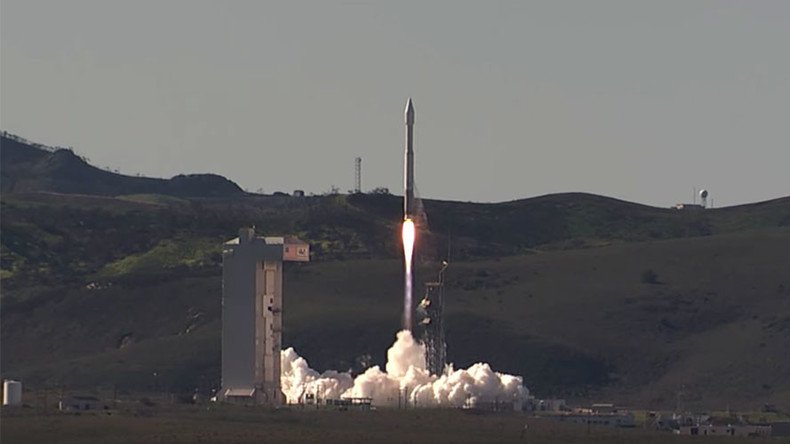US spy satellite launched aboard Atlas V rocket to conduct intelligence missions (VIDEO)

A rocket carrying a classified US spy satellite has successfully launched, kicking off a secret mission for US intelligence agencies.
On Wednesday, a two-stage United Launch Alliance (ULA) Atlas V rocket, carrying the classified NROL-79 satellite, took off from the Vandenberg Air Force Base in Southern California.
ULA, a Lockheed Martin–Boeing joint venture, built the Atlas V rocket to carry the confidential payload for the US National Reconnaissance Office (NRO), a once-secret organization that oversees the US' constellation of spy satellites.
#NROL79 will carry a national security payload designed, built and operated by the NRO. Photo: Payload mating to the @ulalaunch#AtlasV. pic.twitter.com/5OTHIE7dgr
— NRO (@NatReconOfc) February 28, 2017
The 191-foot-high Atlas V rocket reaches mach one, the speed of sound, 81 seconds after liftoff, according to a ULA mission profile.
The booster engine cuts off after the rocket is travelling at 8,700mph (14,001kph), four minutes and three seconds after liftoff. At the time, the rocket travels 140 miles from the launchpad and is located at an altitude of 77.5 miles (124.7 kilometers).
The booster engine cuts off after the rocket is travelling at 8,700mph (14,001kph), four minutes and three seconds after liftoff. At the time, the rocket travels 140 miles from the launchpad and is located at an altitude of 77.5 miles (124.7 kilometers).
"A launch like this requires thousands of hours of activity and practice to execute successfully," Lieutenant Colonel Eric Zarybnisky, 4th Space Launch Squadron commander, said, according to the Vandenberg Air Force Base.
"Engineers and technicians from my squadron work with members of the United Launch Alliance to ensure a successful launch like this one."
Wednesday’s mission marks ULA’s second launch this year and the 117th successful launch since the company was formed in 2006. ULA plans for a total of 11 missions in 2017, and claims to have had a 100 percent success rate in the past ten years of launches.
The launch was originally scheduled for December 1, but was pushed back after wildfires endangered the mission.
ULA dedicated the mission to Ryan Osler, an 18-year veteran of the Ventura County Fire Department, who died in a crash on his way to fight the Canyon Fire at the Vandenberg Air Force Base in September.
#AtlasV#NROL79 mission is dedicated in memory of Ventura County FD's Ryan Osler, who was killed en route to fight the Canyon Fire in Sept pic.twitter.com/42VRe9wnbq
— ULA (@ulalaunch) March 1, 2017
“Tragically, Ventura County firefighter Ryan Osler lost his life en route to assist in fighting the fire. We are honored to dedicate today’s mission to Ryan and his family,” Laura Maginnis, vice president of custom services at ULA, said in the press release after the launch. “Thank you to all of the men and women who worked to deliver this critical asset for our nation’s security.”
In his honor, ULA technicians painted an inscription on the Atlas V booster, saying, “Friend, Father, and Fallen Hero. Ryan S. Osler, Ventura County Fire Department. 1978-2016,” according to the Vandenberg Air Force Base.
While it is unclear what the classified NROL-79 satellite will be doing in space, the NRO says that their satellites provide critical capabilities for American security, communications, navigation, intelligence, and serve as an early warning system of missile launches. They also say the satellites support natural disaster relief, and environmental research for climate change scientists.
ULA's next launch is set for March 8, where they plan to launch the Delta IV WGS-9 satellite for the US Air Force at Cape Canaveral Air Force Station, Florida.












